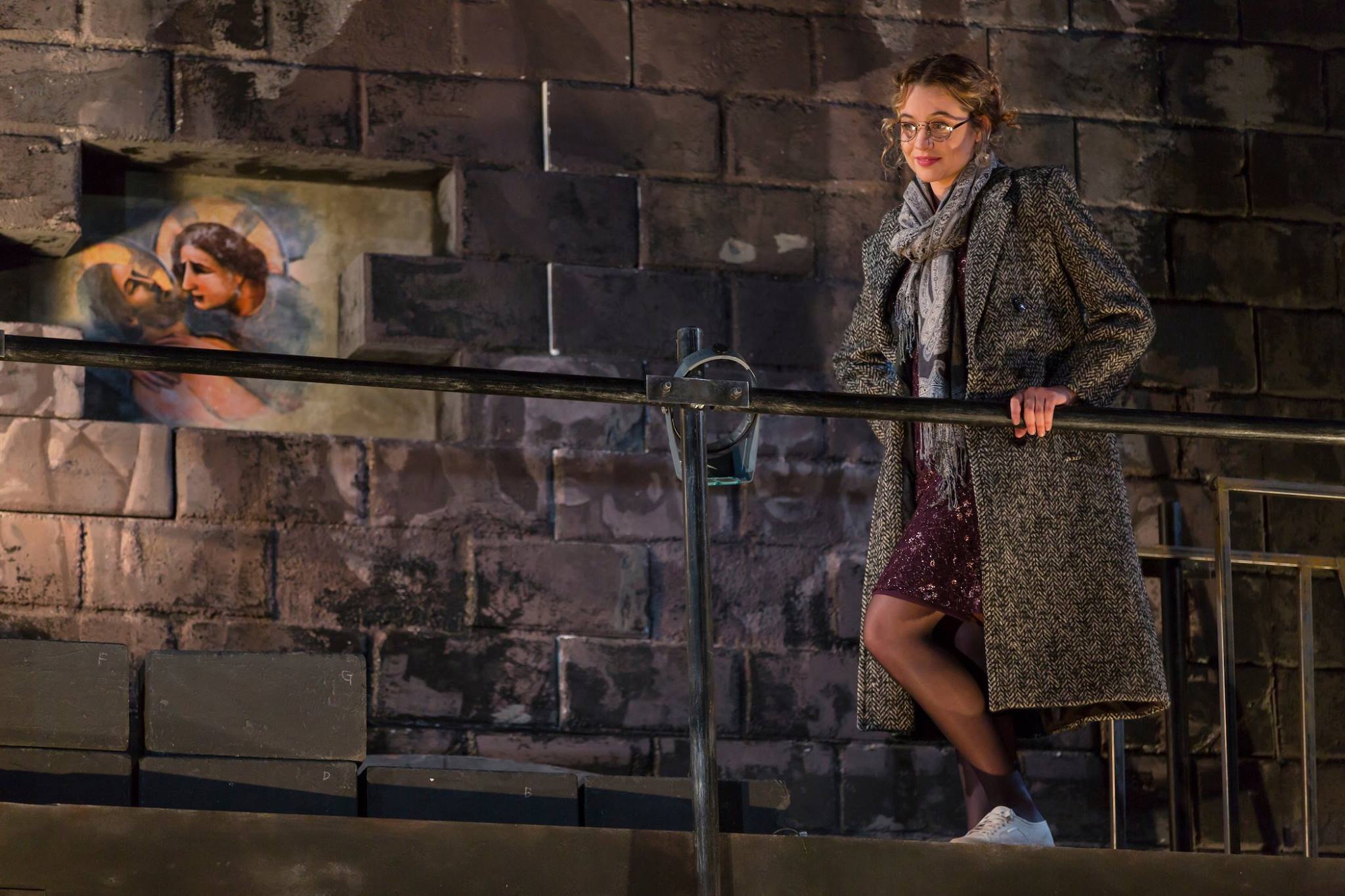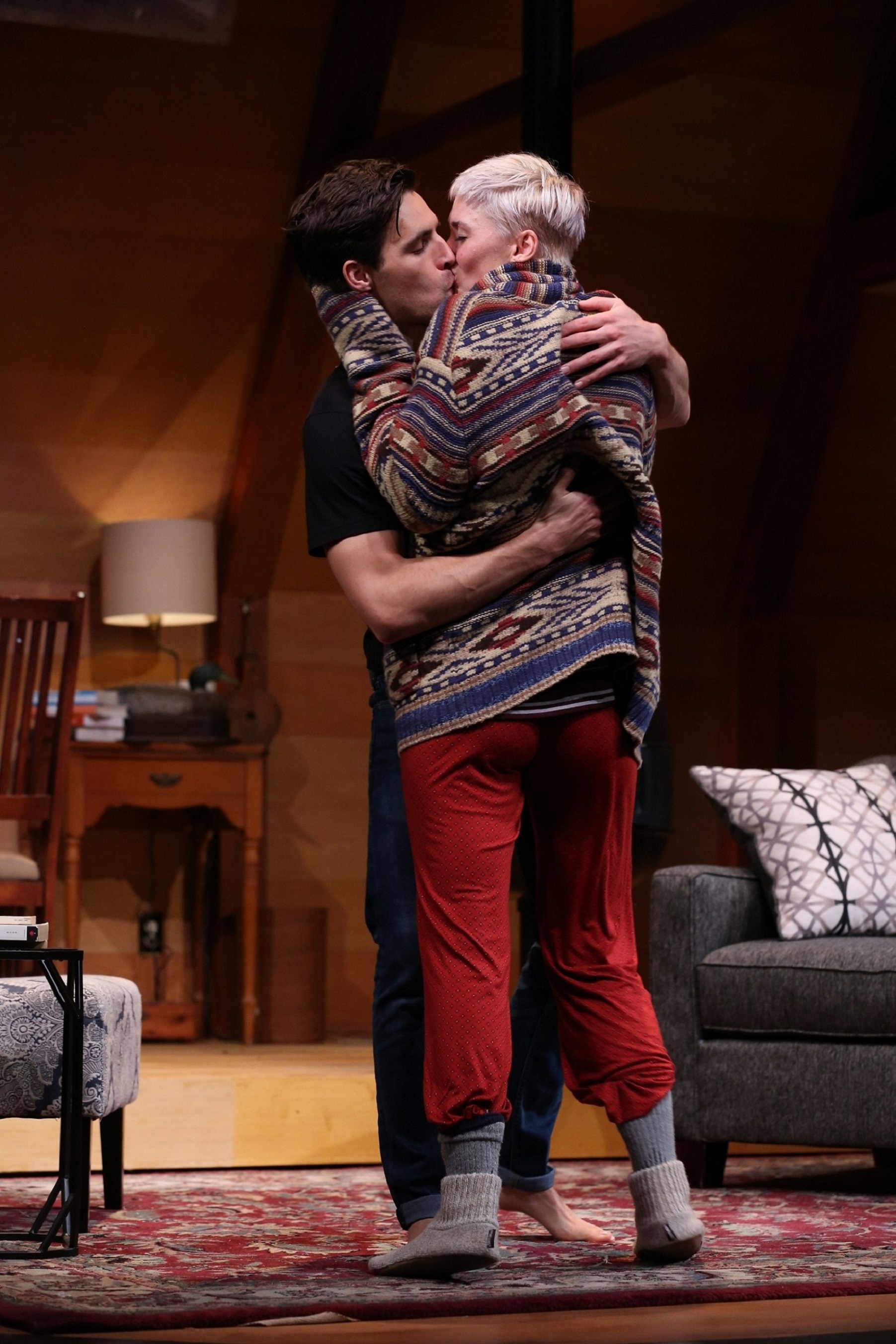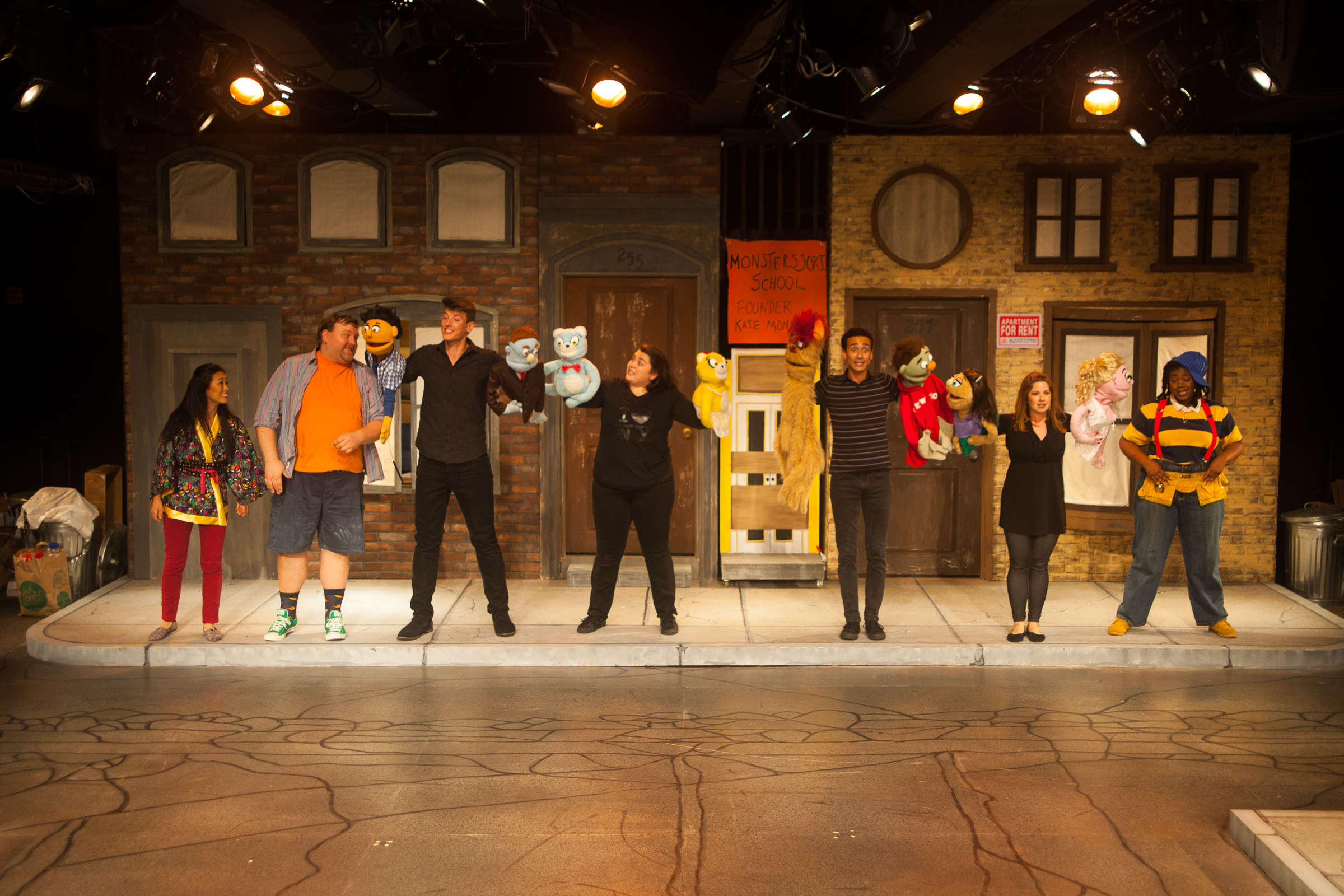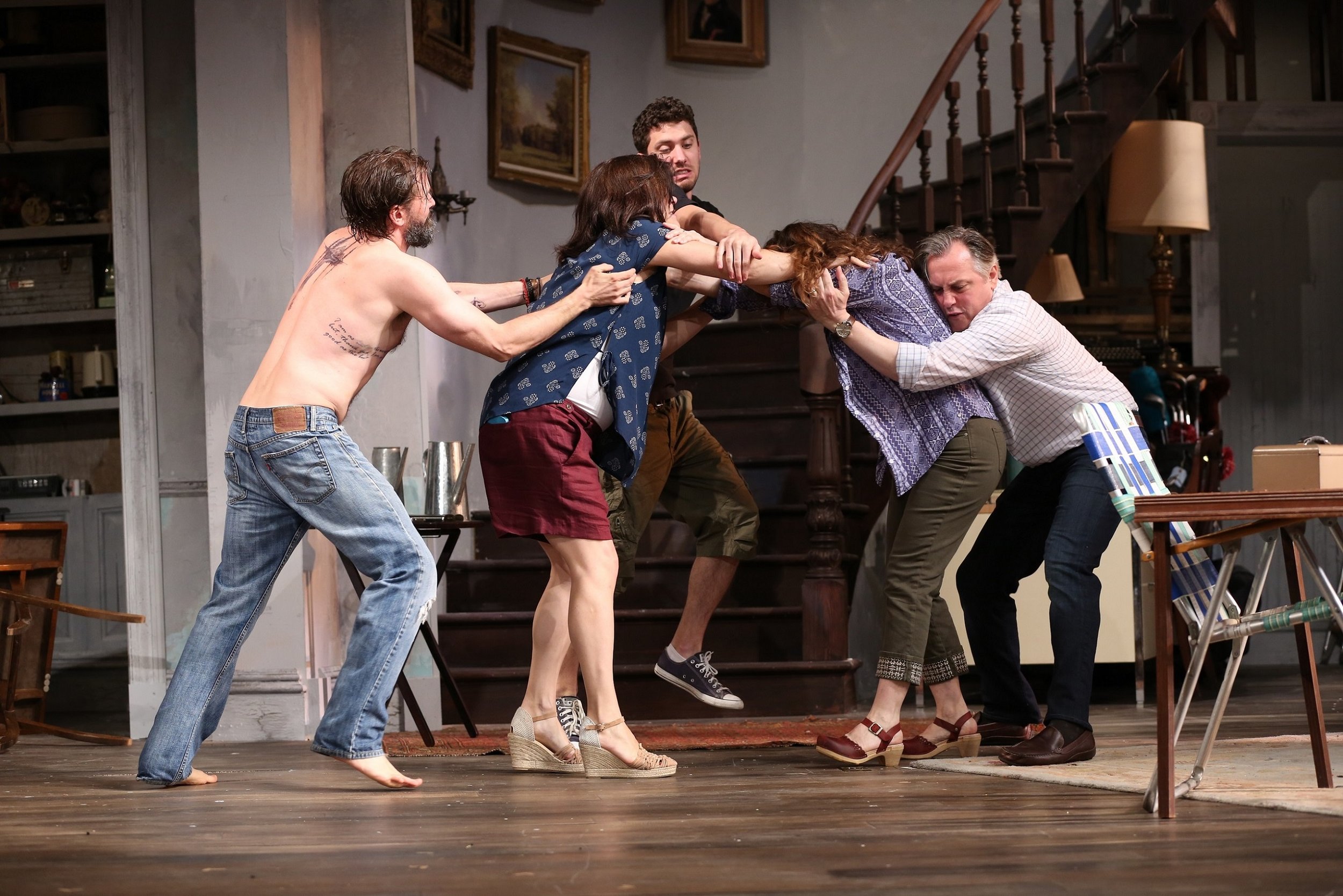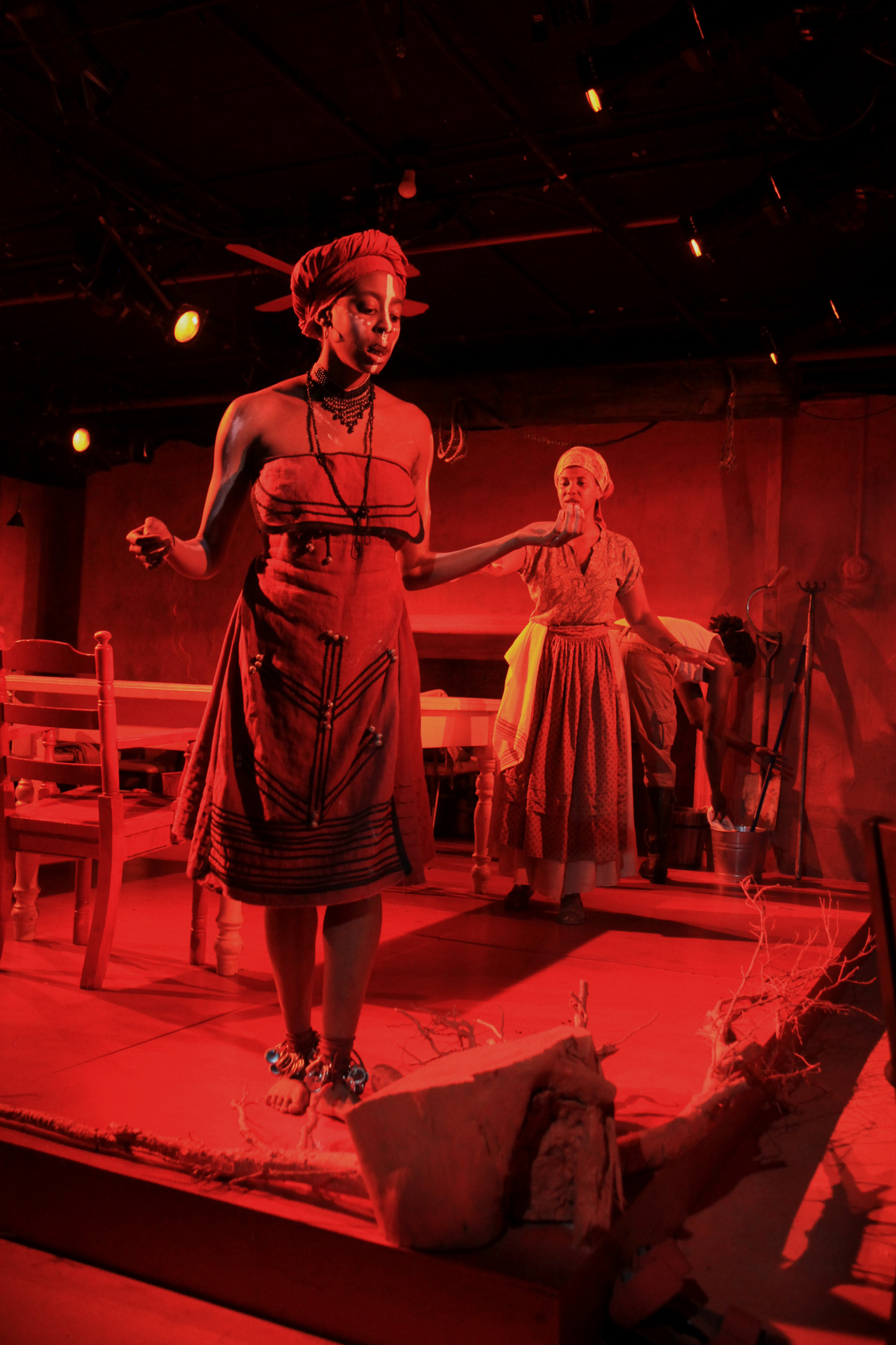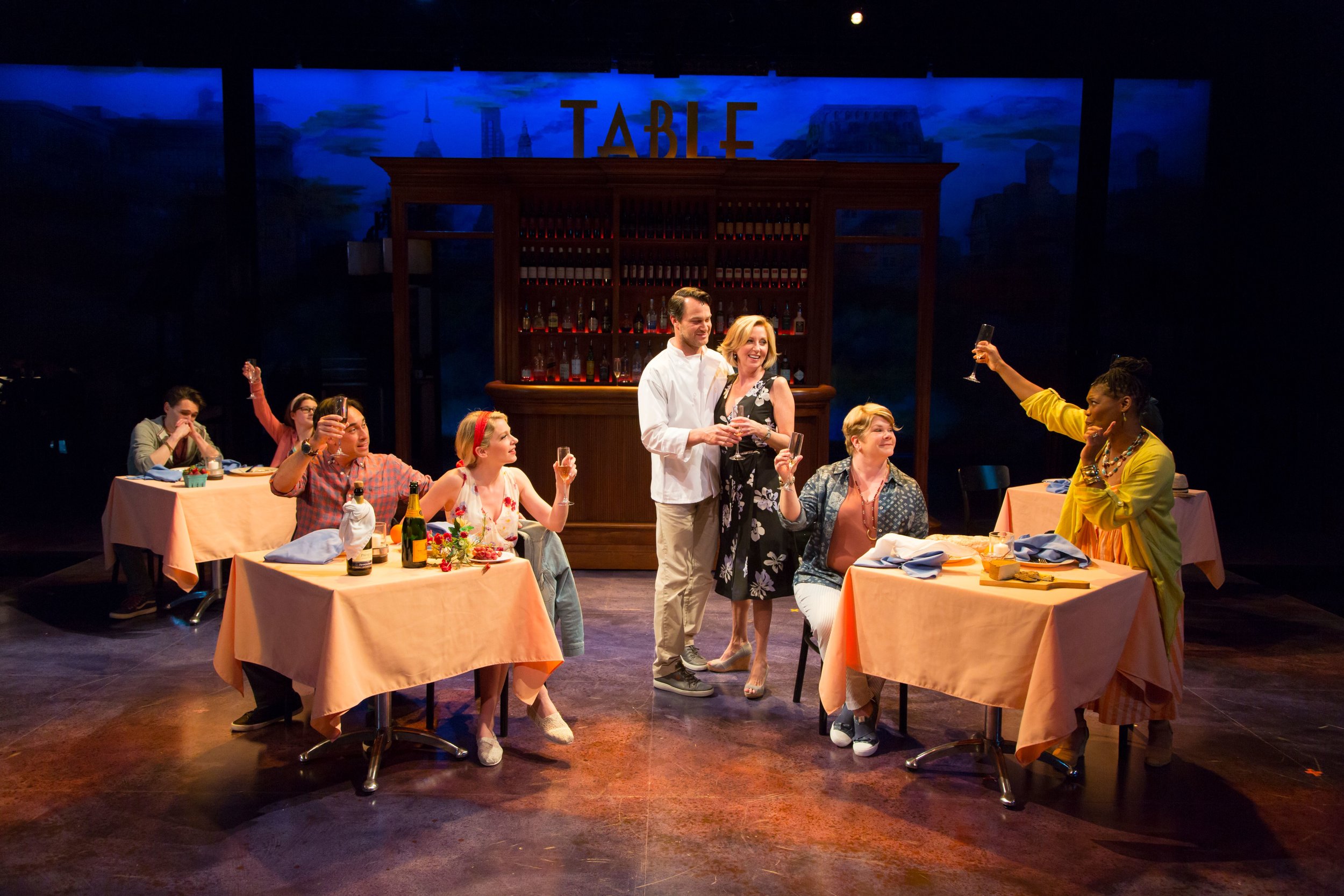Review of Pentecost, Yale School of Drama
A large cast playing multi-ethnic, multilingual characters; a realistic rendering of an ancient church partly destroyed, partly restored, undergoing reevaluation; the bickering of academic approaches to art history; the vying of political agendas, including nationalism, statelessness, and the long durée of displacements, occupations, enslavements and mass slaughters “on the battlements of Europe”; warfare and war by other means; budding romance; betrayal; early electronic communication; militias and mobs and hostages; the cultural clash of West meets East; and stories, both mythic and horrific, of survival, and of salvation, both spiritual and political. David Edgar’s Pentecost, very much of its moment in the mid-90s during the siege of Bosnia, mixes on the stage a cauldron of concerns while managing, for the most part, to maintain a sense of dramatic coherence. Revived this week at the Yale School of Drama by third-year director Lucie Dawkins as her thesis project, Pentecost is an amazingly well-orchestrated display of intellectual challenge presented with a grittiness and naturalness missing from far too many local professional productions of late.
There’s a lot at stake and a lot going on, but Edgar and Dawkins trust in viewers attentive enough to follow the often-overlapping dialogue and its implications. It helps that the script has the kind of deft timings familiar in Tom Stoppard, so that jokes and asides and plays on words have a space to land amidst the arguments, threats, and desperate appeals.
It’s a play without a hero, so to speak, and thus risks an alienation effect different from the kind we’ve become accustomed to. Everyone here has something to prove, and sometimes a life-or-death need to be met, and everything is negotiable, if only because authority is simply a question of who has the upper hand at the moment. Whom we may be rooting for can change with a phrase.
Gabriella Pecs (Stella Baker) (photos by T. Charles Erickson)
Gabriella Pecs (Stella Baker), an art curator at a local museum in an unnamed, fictional East European country, has stumbled upon what may be the art historical discovery of the age: an unknown artist who may have anticipated rather than copied Giotto’s breakthrough into three-dimensional representation. She brings in Oliver Davenport (Patrick Madden), a British art historian, for consultation, and sweeps him into her enthusiasm that the painting’s provenance, which is tenuous but tenable, prove true. For Gabriella, it would be an historic coup for a country deemed backward due to the cultural suppressions endured under Communism. For Oliver, it would be a new masterpiece to admit into the world’s cultural currency. Neither have a problem with removing the work from the twelfth-century church—which has also been a prison and is now a shelter for acts of prostitution—and installing it in the local museum.
American art historian Leo Katz (Steven Lee Johnson) does have a problem with that, and he’s willing to use any expedient to stop them, beginning with discrediting their dating of the painting. For Katz, art works belong where they were made, to age and suffer the vicissitudes of fortune just like people and countries do. And the arguments aren’t only secular: a representative priest of the Catholic church, Father Karolyi (John R. Colley), and of the Orthodox church, Father Bojovic (Arturo Soria), are on hand to make sure their faiths don’t lose a work worthy of veneration. Then there are the government officials, a minister (Patrick Foley) with the swagger of a gangster and a gun-moll of a secretary (Evelyn Giovine), and a former dissident now turned magistrate (Danielle Chaves), to make sure the state’s interests are served. And don’t forget José Espinosa as a seething skinhead who designates himself as the people’s champion.
Father Bojovic (Arturo Soria), Oliver Davenport (Patrick Madden), Leo Katz (Steven Lee Johnson), Father Karolyi (John R. Colley), Gabriella Pecs (Stella Baker), Anna Jedikova (Danielle Chaves)
The show’s first half is well-served by the fun Edgar has with sending up these various vested interests, and the cast, while necessarily a bit young for the roles, put in strong performances, some—as with Foley and Soria particularly—full of comic brio. Others—like Chaves and Colley—play secondary characters with rich backgrounds. As the sparring trio of art officials, Madden gets Edgar’s subtle undermining of British élan (perhaps more audible now than in the 1990s), while Johnson’s Katz is surprisingly energetic, twitching with the passion of a zealot, and Baker as Gabriella is the real star here, as both the heart and soul of this production and the character who, whether or not history is on her side, wants desperately to believe in the value of art over chaos.
foreground: Leo Katz (Steven Lee Johnson), Gabriella Pecs (Stella Baker), Oliver Davenport (Patrick Madden)
While the trio get into an argument about artistic appropriation and how authorities—particularly the political kind—like to assign meaning and status to others, right on cue comes a ragtag band of refugees, seeking asylum in the church while trying to emigrate to somewhere less lethal. They’ve taken hostage Toni Newsome, a clueless Cockney TV host (Evelyn Giovine), and swiftly add the three art historians to their prisoners. It’s then that Katz switches sides, arguing that the painting is an unprecedented masterpiece as Gabriella and Oliver claimed, and therefore the most important hostage of all.
Abdel Rahman (Abubakr Ali), Raif (Jose Espinosa), Amira (Danielle Chaves), Gregori (William Nixon) Antonio (Kineta Kunutu), Cleopatra (Isabella Giovannini)
The show’s second half suffers somewhat from Edgar’s earnest attempts to create platforms for a few stray figures from the huddled masses yearning to breathe free. The ensemble cast are impressively secure in recreating the accents and manners and languages of a heterogeneous tribe of refugees. Each has a story and their individual paths of suffering are also emblematic of nations and peoples brutalized by conquerors and, all too often, saviors. Particularly strong are Amandla Jahava as Yasmin, the leader, a refugee from Palestinian Kuwait, and Kineta Kunutu as Antonio, a Mozambican with a sharp eye and a gift for parable. Sohina Sidhu, as Tunu, acts out a dramatic fable in a tongue no one present understands, a showcase for the need to tell stories and the limitations of language in communicating them.
The play’s richly ironic conclusion is also heartbreaking—leave it to the British to combine those perspectives in one. As Gabriella, the heartbroken one, Baker powerfully registers hysterics as both outcome and response. Standing next to a stroller with a swastika graffitied on it, her breakdown is for us.
There are many fine aspects to this production. Stephanie Osin Cohen’s set is one of the best uses of the Yale Repertory stage and space I’ve seen. Herin Kaputkin’s costumes not only get the garb of various peoples right, but also of that odd tribe called academia c. 1995—check out Katz’s jacket with the rolled sleeves and baggy elegance. Wigs and hair-stylings and props are also handled with great care, and lighting and sound effects—including gunshots, and candlelight, and the ballet of death late in the play—point up the skill of Nic Vincent, lighting, and Kathryn Ruvuna, sound. Music is well-served by Danielle Chaves’ evocation of “the Cellist of Sarajevo,” and, as Father Karolyi, John R. Colley’s dramatic entrance, nude, in the manner of Leonardo’s famed Vitruvian man speaks as the best art always does: as image and reference and thing-in-itself.
Oliver Davenport (Patrick Madden), Mikhail Czaba (Patrick Foley)
As with Stoppard, Edgar can be a bit self-congratulatory in his effects. Oliver’s fable of an Arab artist transplanted to Eastern Europe, creating a synthesis of East and West, Muslim and Christian, smacks of trying too hard, where accommodation is meant to be more progressive than appropriation. Unconvincing or not, Oliver’s pitch writes uneasy conscience into art history which, no matter how benighted it may be, is preferable to the presumptuous supremacy of earlier versions.
Pentecost
By David Edgar
Directed by Lucie Dawkins
Choreographers: Gwyneth Muller, Varsha Raghavan, Garima Singh; Scenic Designer: Stephanie Osin Cohen; Costume Designer: Herin Kaputkin; Lighting Designer: Nic Vincent; Sound Designer: Kathryn Ruvuna; Production Dramaturg: Matthew Conway; Technical Director: Phillip Alexander Worthington; Stage Manager: Christina Fontana
Cast: Abubakr Ali, Stella Baker, Danielle Chaves, John R. Colley, José Espinosa, Patrick Foley, Isabella Giovannini, Evelyn Giovine, Amandla Jahava, Steven Lee Johnson, Ipsitaa Khullar, Kineta Kunutu, Patrick Madden, William Dixon, Sohina Sidhu, Arturo Soria
Yale School of Drama
October 3-7, 2017
